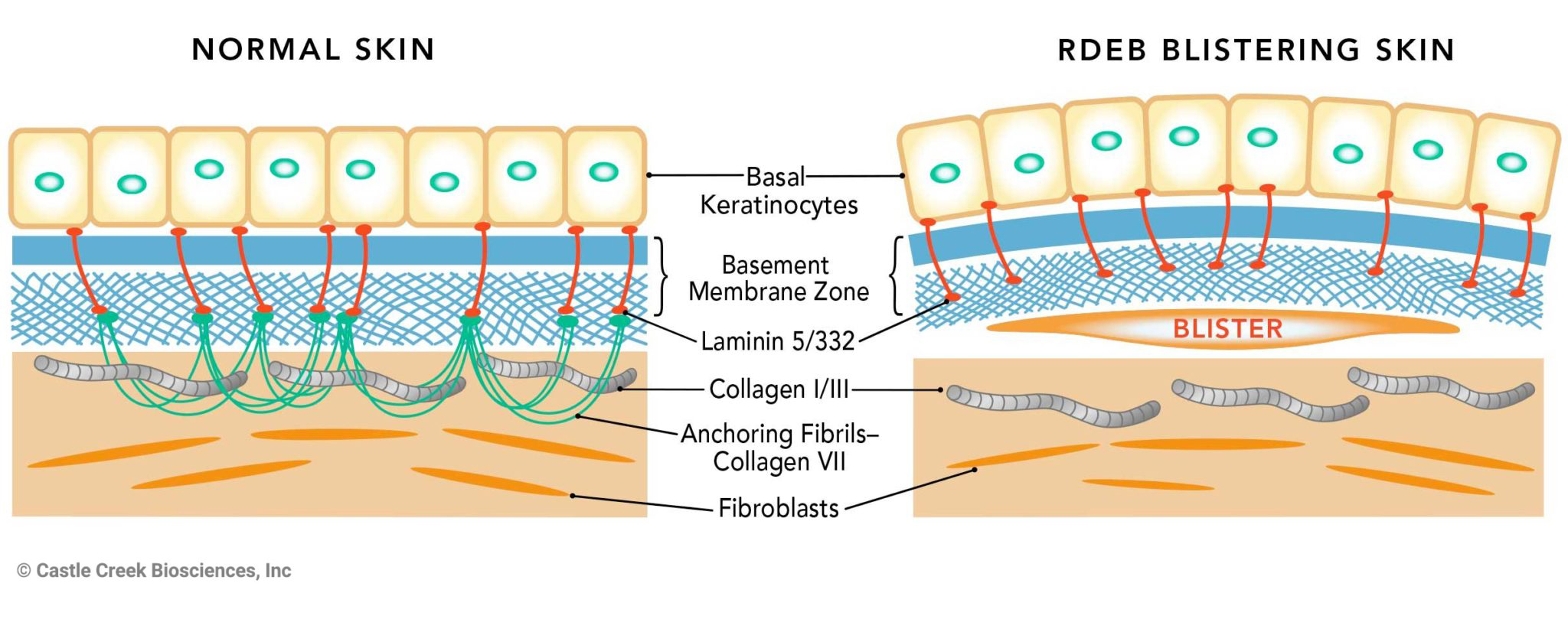About Dystrophic Epidermolysis Bullosa and the Skin
People who have dystrophic epidermolysis bullosa (DEB) have a genetic change or “mutation” which causes their skin cells to make very little or none of a protein called type VII collagen (COL7). COL7 helps keep the outer layer of the skin (epidermis) attached to the inner layer of the skin (dermis). Because of this mutation, the outer layer of skin can easily separate from the inner layer of skin causing blisters and wounds.
Recessive dystrophic epidermolysis bullosa (RDEB) patients do not produce functional COL7 due to a mutation in the COL7A1 gene. COL7-a protein- is the main component of anchoring fibrils that hold together the layers of skin. Without these fibrils, skin layers separate causing severe blistering, open wounds and scarring in response to any kind of friction or trauma.
Dominant dystrophic epidermolysis bullosa (DDEB) patients may have some intact, functional anchoring fibrils resulting in a milder clinical presentation than typically observed in RDEB. These patients still can have significant morbidity due to persistent and recurrent blistering and subsequent scarring on skin surfaces.

In total, EB affects approximately 500,000 people worldwide (Rashidghamat, 2017). Approximately 25% of affected individuals have dystrophic EB (DEB) (Bruckner, 2020). These patients have a very high rate of significant and sometimes life-threatening health complications, including skin and internal disorders.
DEB affects all genders and every racial and ethnic background equally.
Treatment options
In May 2023, FDA approved the first treatment for DEB, Vyjuvek® (beremagene geperpavec- svat), a topical product which is indicated for the treatment of DEB wounds in patients 6 months of age and older with mutation(s) in the COL7A1 gene. In clinical studies of Vyjuvek, most (74%) of the DEB wounds treated were small (< 15 cm2). Vyjuvek must be applied weekly by a health care professional (US package insert).
D-Fi is intended to treat larger wounds (10 cm2 to 50 cm2) and may have a more durable effect, with treatment required approximately every 8 weeks.
